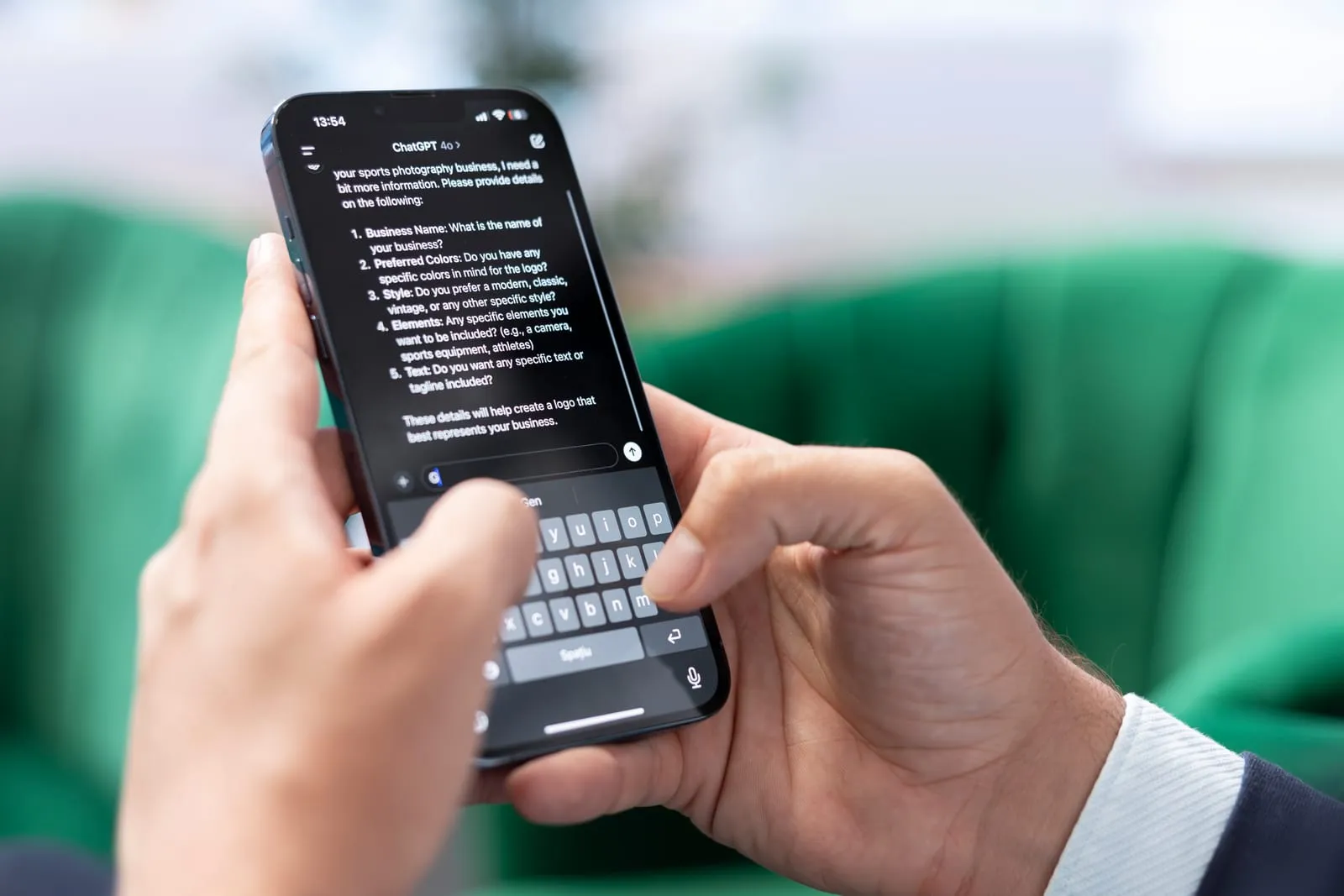ChatGPT Prompts for HR: make AI work for your team


AI is here – use it for your HR team advantage. Whether you’re drafting onboarding emails or preparing a pulse survey, tools like ChatGPT or Gemini can help HR professionals streamline workflows and focus on what matters most – people. Frame your request in a way AI can genuinely understand and you’ll get best results. In this guide, we’ll show you how to craft effective HR prompts, avoid common mistakes, and embed AI into everyday HR operations.
What are HR prompts, and why should you care?
At its simplest, a prompt is a message you type into a generative AI tool like ChatGPT or Gemini to get a response. But when you work in human resources, that message can’t be vague. You're dealing with people, policies, and culture – shaping policies, defining culture, and communicating with many employees.
That’s where HR prompts for ChatGPT come in. They help HR professionals translate their knowledge into clear, useful queries that AI can understand – and turn into relevant content. Whether it’s for writing job ads, preparing performance review notes, or even translating policy updates, the right prompt saves time, but the quality still meets your standards.
ChatGPT for HR professionals: key use cases
If you’re wondering where ChatGPT fits into your day-to-day as an HR specialist, here are just a few concrete examples.
- Drafting recruitment messages that express your company tone.
- Creating onboarding plans personalized to different roles or departments.
- Translating internal policies into plain language.
- Prepping performance review templates or feedback guides.
- Brainstorming employee engagement campaigns in different tones.
- Analyzing employee survey results and summarizing insights.
These are some of the most popular ChatGPT HR use cases, and they’re already helping teams streamline communication without losing their human touch. When integrated with platforms like ours at Calamari, AI-generated content can also align with your workflows – making automation even smoother.
How to write AI prompts for HR (without sounding robotic)
There’s no need to master the technical side to get quality responses. Start with intent and well-defined messages. When your message is concrete, AI knows where to go. Here’s how to write better prompts, especially when using ChatGPT for human resources work:
1. Be specific about the task
Instead of “write onboarding message,” say: “Write a friendly onboarding email for a new junior developer joining a hybrid team in a startup.” or find the best leave management system integrated with Microsoft
2. Add length and tone guidelines
Tell the AI how long the text should be and what tone to use: “Keep it under 150 words and use a warm, casual tone.”
3. Include context when needed
The more context, the better the result: “Assume this is their first job after college. Mention our wellness benefits and weekly team lunches.”
4. Test and iterate
Try multiple variations of your prompt and compare results. Slight changes can lead to significant differences.
Following these tips will help you get the most out of AI prompts for HR – whether you're using ChatGPT, Gemini, or any other LLM-based tool.
Gemini or ChatGPT for HR? Which works better?
Let’s talk about tools. ChatGPT is by far the most popular AI assistant in the HR space, especially with its vast plug-in and enterprise ecosystem. But Gemini (from Google) is quickly catching up, especially in multilingual contexts or when working with integrated Google Workspace tools.
The platform matters less than the clarity of your prompts. That’s why you should test both. Try your HR prompts for ChatGPT in Gemini, and vice versa. You might be surprised how differently they respond – and which one feels more aligned with your team’s tone.

Common mistakes HR professionals make when writing prompts
Even experienced HR managers sometimes fall into these prompt-writing traps.
- Being too vague (“Write a policy” instead of specifying the purpose, length, and audience).
- Forgetting tone (“Make it friendly” vs. “Use a calm and supportive tone suitable for internal crisis communication”).
- Asking too many things at once (Split your prompt if you're giving multiple tasks)
- Not reviewing outputs carefully (Even great prompts need editing – especially when it’s about legal or sensitive info).
Our tip? Treat AI as your assistant, not your decision-maker. You set the direction – ChatGPT for HR is there to speed things up, not replace your judgment.
Sample HR prompts for ChatGPT and Gemini
Here are a few examples of ChatGPT HR prompts to get you started:
Recruitment
“Write a job posting for a remote UX designer at a B2B SaaS company. Mention flexible hours and strong internal training programs.”
Onboarding
“Generate a checklist for onboarding a part-time customer support rep working weekends only.”
Communication
“Draft a brief message to the team about an upcoming change in time-off policy. Keep it informative but empathetic.”
Feedback & performance
“Create a performance review template for junior marketing employees with space for goals, feedback, and manager comments.”
Internal campaigns
“Suggest 3 engagement ideas to boost participation in our upcoming hybrid wellness week.”
Think of them as raw ingredients – adjust the recipe to fit your flavor. The real magic starts once you adapt them to your tone, company culture, and HR goals.
Why care about AI in HR?
AI has become a real asset in everyday HR work. From automating routine tasks to generating personalized communication, tools like ChatGPT and Gemini help professionals get back time and focus on what really matters.
From clearing away repetitive admin to writing with a personal touch, tools like ChatGPT and Gemini help professionals shift their time toward people, not paperwork – improving employee experience, building stronger workplace culture, and supporting long-term growth. What you gain is more than efficiency – it’s an HR team that adapts quickly and leads with empathy.
Summary
You don’t need to be an AI expert to use ChatGPT for HR – you just need to learn how to ask better questions. With thoughtful prompts and the right tools in place, AI becomes a smart assistant that supports your work. Whether you're generating documents, drafting internal communications, or just saving time on writing.
If you're thinking bigger about what HR can be, we're ready to move with you. At Calamari, we make people-first automation easy, efficient, and AI-ready.
Take a look at our HR blog for more insights – or contact us now to see how Calamari can help you do more with less.
FAQ: ChatGPT Prompts for HR: make AI work for your team
What are ChatGPT prompts for HR?
ChatGPT prompts for HR are specific instructions you give to AI to generate useful HR content – like onboarding emails, job ads, or policy summaries. Well-aimed prompts let AI fill in the blanks, so you're not drafting from an empty page every time.
How can HR professionals use ChatGPT effectively?
Start with clear, detailed prompts tailored to your task and audience. When your prompt includes real background, the AI gives you richer, more useful answers.
Is ChatGPT safe to use for human resources work?
Yes, as long as you don’t enter confidential or sensitive data. It's best used for drafting, ideation, and content generation – not for processing personal employee records.
What are the most common ChatGPT HR use cases?
Popular use cases include writing job postings, generating onboarding plans, summarizing survey results, or preparing performance reviews. It’s especially useful for speeding up repeatable content tasks.
Can Gemini be used like ChatGPT for HR?
Absolutely. Gemini works well for HR tasks – especially when integrated with Google Workspace or when you need strong multilingual support. It’s worth comparing both tools for tone, accuracy, and output quality.
How do I write better AI prompts for HR tasks?
Point out exactly what you're after – who it’s for, how it should sound, and how long it should be. Think of it like briefing a colleague – clear direction leads to better results.
What mistakes should I avoid when using AI for HR?
Avoid vague instructions, mixing too many tasks in one prompt, and skipping the review step. Always edit the AI output before sharing it with others – especially if it's official or legal communication.
Does ChatGPT replace HR professionals?
Not at all. ChatGPT for HR professionals is a support too l – it handles the routine, so you can focus on strategic, human-centered work like employee engagement and retention.
What are the benefits of using ChatGPT in HR?
It saves time, helps with writer’s block, and produces consistent, structured content quickly. It also helps standardize communication across teams and regions.
Where can I learn more about using AI in HR?
Start by experimenting with AI tools like ChatGPT or Gemini using real HR tasks – draft a policy, write an email, or prep a survey summary. You’ll learn the fastest by doing, and refining prompts as you go.


















